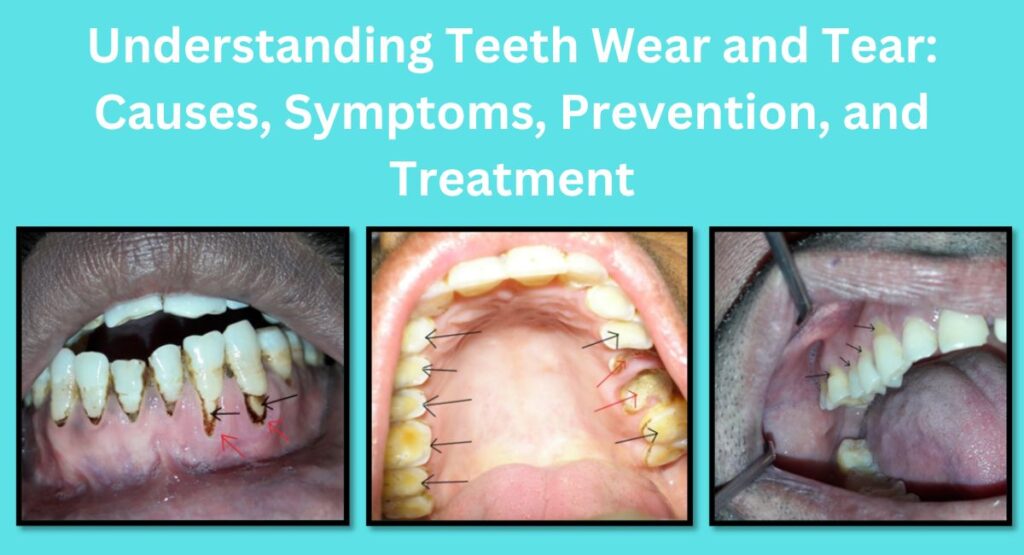
Maintaining proper oral hygiene is crucial for a healthy smile and overall well-being. While brushing and flossing are essential parts of any dental care routine, there are advancements in oral care products that can enhance our efforts. One such innovation is the dental water floss, a device designed to clean between teeth and along the gumline using a gentle stream of water. In this article, we will explore the benefits, usage, and frequently asked questions about dental water floss. We will also compare them with traditional flossing. So, let’s dive into the world of dental water flossing and discover why it’s gaining popularity among oral care enthusiasts.
This post may contain affiliate links which means we may receive a small commission (at no additional cost to you) for purchases made through links. We include products we think are useful for our readers. Learn more on our Disclaimer page.
Understanding Traditional Flossing
Traditional flossing, along with brushing, has been a highly effective practice in maintaining oral hygiene for a long time. This method involves using dental floss, a thin filament, to remove plaque and debris from the tight spaces between teeth and along the gumline.
Benefits of Traditional Flossing
- Effective Plaque Removal: Proper flossing effectively removes plaque, preventing the development of tartar and reducing the risk of tooth decay and gum disease. Traditional flossing effectively removes plaque by mechanically scraping and disrupting it, much like the action of brushing. The thin filament of dental floss reaches between teeth and along the gumline, helping to dislodge and remove plaque buildup.
- Gum Health: Flossing helps eliminate harmful bacteria by removing plaque that can lead to gum inflammation and destruction.
- Bad Breath Prevention: Removing food debris and plaque from hard-to-reach areas minimizes the potential for unpleasant breath.
- Cost and Accessibility: Traditional floss is widely available, affordable, and portable, making it easily accessible to individuals of all ages.
Limitations of Traditional Flossing
- Unable to clean other hard-to-reach areas: Traditional flossing is effective in removing plaque and debris from interdental (areas between teeth) regions, but it may not be able to access all hard-to-reach areas, such as very tight spaces between teeth, deep gum pockets, and below the gumline on outer and inner surfaces of teeth. It mainly cleans the teeth and the area below the gumline on interdental region, but it may not be able to effectively clean other areas where the floss cannot reach.
- Limited Reach: Traditional floss may struggle to access hard-to-reach areas, especially for individuals with braces or bridges.
- Manual Dexterity Required: Effective flossing technique requires coordination and dexterity, making it challenging for individuals with limited hand or finger mobility.
- Discomfort or Bleeding: Some individuals may experience discomfort or bleeding gums when using traditional floss, especially if they have sensitive or inflamed gum tissue.
What is dental water floss or waterpik?
Dental water floss is a device that uses a gentle yet powerful stream of water to clean the fissures on the teeth, areas between teeth, and along the gumline. It offers an alternative to traditional flossing methods, providing effective plaque and debris removal, particularly in hard-to-reach areas.
Dental water flosser
Dental cordless water flosser
The Benefits of Dental Water Floss
Maintaining good oral health goes beyond brushing and traditional flossing. Dental water floss offers numerous benefits that contribute to a healthier mouth. Let’s take a closer look at some of these advantages:
- Effective Reach
Water flossers can effectively reach and clean all the hard-to-reach areas of the teeth, including the fissures, interdental spaces, and along the gumline. The powerful stream of water can flush out debris and bacteria from these challenging areas, providing a thorough cleaning experience.
- Better Plaque Removal
Plaque buildup can lead to tooth decay and gum disease. Traditional flossing can effectively remove plaque, but dental water floss takes it a step further. The powerful stream of water reaches areas that are difficult to access with regular floss, such as below the gumline on outer and inner surfaces of teeth, deep gum pockets and very tight spaces between teeth. By flushing away debris and bacteria, dental water floss ensures a thorough cleaning process.
- Gentle on Gums
One common issue with traditional flossing is gum irritation. Dental water floss provides a gentler alternative, minimizing the risk of bleeding or discomfort. The adjustable water pressure allows users to customize the flossing experience based on their sensitivity levels. This feature is especially beneficial for individuals with gum disease or those who have undergone dental procedures.
- Enhanced Gum Health
Gum health is a crucial aspect of overall oral hygiene. Dental water floss can contribute to healthier gums by reducing inflammation and stimulating blood circulation. The pulsating action of the water stream can help strengthen gum tissue, leading to improved gum health over time.
- Ideal for Patients with braces or bridges
For individuals with dental crowns, bridges, braces, dental implants, or other dental appliances, maintaining regular oral hygiene, including brushing or traditional flossing can be challenging. Dental water floss offers an efficient solution as it effectively removes food particles and debris from around brackets and wires. This can help prevent staining, bad breath, and other issues commonly faced by dental patients.
- Ideal for certain situations
Dental water floss is suitable for individuals with limited dexterity, or neuromuscular issues, as well as hospitalized patients who may struggle with traditional flossing methods.
Limitations of Water flossers
While water flossers offer numerous benefits, they also have some limitations to consider:
- Plaque Removal: Water flossers are effective at removing loose plaque and food particles, but they may not be as effective as traditional flossing in removing firm plaque that adheres to the teeth. The stream of water may not have the same scraping action as string floss, which can hinder the removal of stubborn plaque.
- Cost and Maintenance: Water flossers can be more expensive than traditional floss, and they require regular maintenance. This includes refilling the water reservoir, cleaning the device, and replacing the nozzle periodically. Additionally, some models may require batteries or electricity to operate.
- Learning Curve: Using a water flosser may require some practice and adjustment. It can take time to find the right pressure and angle to effectively clean between teeth and along the gumline without causing discomfort or making a mess.
- Accessibility: Water flossers may not be as portable or easily accessible as traditional floss. They require a power source or a full reservoir of water, which may limit their use in certain situations, such as during travel or in areas with limited access to water or electricity.
- Sensitivity and Discomfort: Some individuals may find the sensation of water flossing uncomfortable or too intense, especially if they have sensitive gums or teeth. It is important to adjust the pressure setting accordingly and consult with a dental professional if any discomfort persists.
How to Use Dental Water Flossers
Using dental water flosser is a simple and straightforward process. Follow these steps to incorporate it into your daily oral care routine:
- Choose the Right Device: Select a dental water flosser that suits your needs and preferences. Look for features such as adjustable water pressure, interchangeable nozzles, and a large water reservoir for added convenience.
- Fill the Reservoir
Start by filling the reservoir of the dental water floss with lukewarm water. Avoid using hot water, as it may cause discomfort or damage to the device.
- Select the Water Pressure
Most dental water flosser models offer adjustable water pressure settings. Begin with a lower setting and gradually increase it until you find a comfortable level. This allows you to personalize the flossing experience based on your needs and preferences.
- Aim the Tip
Hold the device over a sink and aim the tip towards your teeth and gumline, paying attention to the chewing surfaces, spaces between teeth and gaps between teeth and gumline. Close your lips slightly to prevent splashing.
- Target Hard-to-Reach Areas
Starting from the back of your mouth, gently guide the tip along the gumline, pausing briefly between teeth and grooves present on chewing surfaces. Allow the water stream to flow between your teeth, effectively removing plaque and debris.
- Clean the Device
After each use, thoroughly clean the device according to the manufacturer’s instructions. Regular maintenance will ensure optimal performance and prolong the lifespan of your dental water flosser.
Conclusion
Water flossers should not be considered as a substitute for brushing or traditional flossing. However, they do offer unique benefits that complement these oral hygiene practices. Water flossers can effectively clean hard-to-reach areas and provide additional support for individuals with limited dexterity or specific dental needs.
It is important to use water flossers in conjunction with brushing and traditional flossing can help you improve your overall oral health and contribute to a healthy, beautiful smile.
To achieve the best oral hygiene results, it is recommended to brush and floss twice a day, and incorporate all these methods into your routine. Consult with your dentist for any concern and personalized advice. They can help you determine best option for your oral care needs.
Frequently Asked Questions (FAQs)
Q1: Is dental water floss suitable for everyone?
A1: Dental water floss is generally suitable for most individuals. However, it’s important to consult with your dentist before incorporating it into your oral care routine, especially if you have specific dental conditions or concerns.
Q2: Can dental water floss replace traditional flossing?
A2: While dental water floss offers unique benefits, it is not meant to replace traditional flossing completely. It is recommended to use dental water floss in conjunction with regular flossing and brushing for optimal oral hygiene.
Q3: How often should I use dental water floss?
A3: Ideally, dental water floss should be used once a day, alongside regular brushing. However, the frequency may vary depending on individual needs and recommendations from your dentist.
Q4: Can I use mouthwash or other additives in the water reservoir?
A4: It is generally recommended to use only lukewarm water in the reservoir of your dental water floss. Adding mouthwash or other additives may interfere with the functionality of the device or cause damage. Furthermore, it is generally not recommended to use mouthwash daily unless specifically advised by your dentist.
Q5: Is dental water floss suitable for children?
A5: Dental water floss can be used by children, but it is advisable to consult with a pediatric dentist for guidance on the appropriate age and usage. Children should be supervised during the flossing process to ensure safety and proper technique.
Q6: How long does it take to see results with dental water floss?
A6: The results of using dental water floss may vary depending on individual factors and consistency of use. However, many people notice improvements in oral health, such as cleaner teeth and healthier gums, within a few weeks of incorporating it into their routine.











